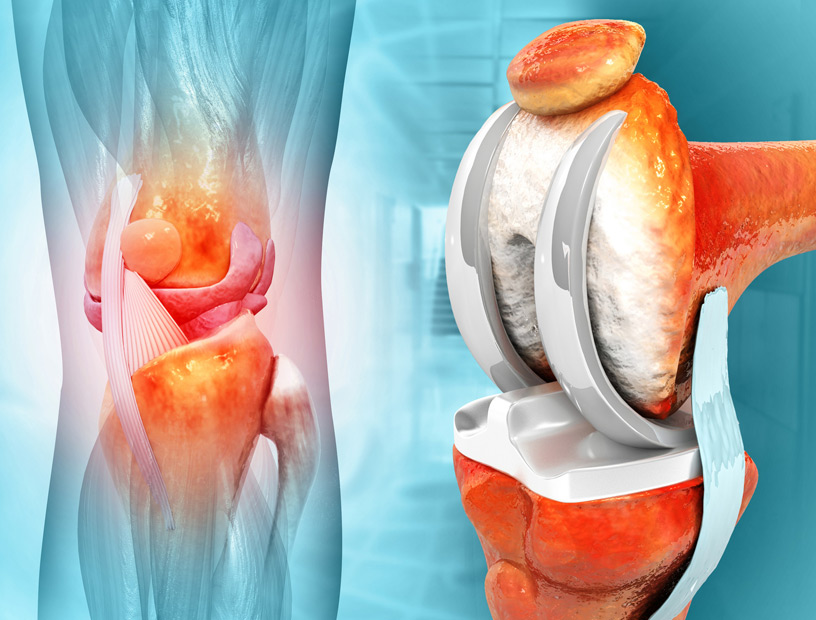
Get your mobility back with total knee replacement from Orange County Orthopedic Clinic.
Total knee replacement is a safe, effective intervention for knee pain relief and restoration of mobility and function of the joint. Your knee is the largest joint in your body. It works as a hinge to:
- Flex the back of the leg
- Extend the front of the leg
Benefiting from Total Knee Replacement
Arthritis is the most common condition treated with a total knee replacement. Osteoarthritis, or “wear and tear” arthritis, can cause stiffness, pain, and swelling after prolonged rest or extended bouts of activity, such as walking up the stairs. Osteoarthritis symptoms are caused by the degradation of tissues within the knee joint. Replacing those tissues offers great relief to sufferers of osteoarthritis as it replaces worn, arthritic tissue with a pristine new joint.
Total knee replacement surgery is also recommended for patients with deformity of the knee joint. For example, a “bowing” knee risks damage to other structures in the leg and hip. Replacing the damaged knee joint protects the knee itself and prevents future injury to the knee and other parts of the leg.
Finally, any severe pain, especially if it is experienced at rest and does not improve with more conservative modes of treatment, can be treated with a total knee replacement. Ninety percent of total knee replacements provide immediate relief of knee pain and last longer than ten years. That success rate is among the highest of all orthopedic procedures.
Candidates for Total Knee Replacement
There are no age or weight restrictions or criteria for total knee replacement in most cases. However, most recipients of a total knee replacement are between the age of 55 and 70. Younger, more active candidates may require a second knee replacement surgery, which has a much lower success rate.
Your surgeon will evaluate the extent of your pain and restrictions to your mobility during his assessment of your condition. As knee replacements are most successful when enough healthy tissue is present to support the resurfacing materials, an x-ray or MRI may be performed to visualize the extent of tissue erosion within the joint.

on caring for specific orthopedic needs.

